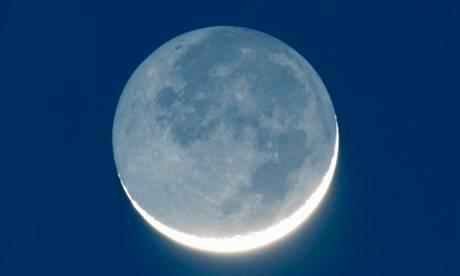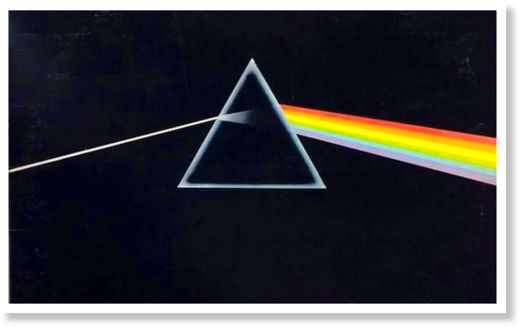In a demonstration of the power of science to ruin a perfectly respectable work of art, researchers have discovered the colour of the dark side of the moon.
Measurements from a telescope in Hawaii mean that pedants may now argue that, technically speaking, if one wanted to be entirely accurate, the side of the moon referred to in Pink Floyd's 1973 album The Dark Side of the Moon should really be described as "turquoise".
The revelation comes from two years of measurements by an international team of astronomers who installed a telescope and a sensitive camera at the Mauna Loa Observatory in Hawaii, run by the US National Oceanic and Atmospheric Administration.
The dark side of the moon is not the same as the far side, which gets as much sunlight as the side facing us. The dark side is not lit directly by sunlight, but by light reflected from Earth. It is much fainter, and best seen around the time of the new moon.
"This is sunshine that struck the Earth, was coloured by the Earth, was reflected up to the moon, struck the moon, and then came back to us," said Peter Thejll, a senior scientist at the Danish Meteorological Institute in Copenhagen and first author on the study.
Images of Earth from space show clearly that the planet looks blue. But when this blue light strikes the moon, the light that's reflected back is turquoise.

To measure the colour of the dark side of the moon, the astronomers had first to screen out light from the bright side that had been scattered by Earth's atmosphere. This scattered light produces a shifting halo around the moon and messes up measurements of the dark side. The same effect produces the familiar glow around street lamps seen from a distance.
The scientists snapped pictures of the moon through the telescope using two different colour filters. Amid hundreds of images, they found a pair taken of the waning crescent moon on 18 January 2012 that had exactly the same halo. When they subtracted one image from the other, the halo disappeared and they could measure the true colour of the moon's dark side.
"We know how unlikely it is that the haloes should cancel out, and yet we found a pair where they did. That says something about the conditions on the night when we took those pictures. Something was unique so the two haloes were identical and they cancelled and frankly we don't know why," Thejll said.
"This is the first accurate colour measurement of the dark side of the moon," Thejll said. The last attempt was made in 1965 from an observatory near Bloemfontein in South Africa. Thejll's study has been accepted for publication in the journal Astronomy and Astrophysics.
Thejll said that observations of the dark side of the moon can help scientists to monitor the colour of the Earth. This could be useful for assessing climate change models, some of which predict changes in cloud cover.
"We have measured the same colour now as was seen in the 1960s and that might say something about what has happened to the Earth in the meantime, and it's consistent with there being no change in the amount of cloud," Thejll said. "But this was just one measurement, and the colour of the Earth changes on an hourly basis."
Surviving members of Pink Floyd were unavailable for comment.




Reader Comments
to our Newsletter